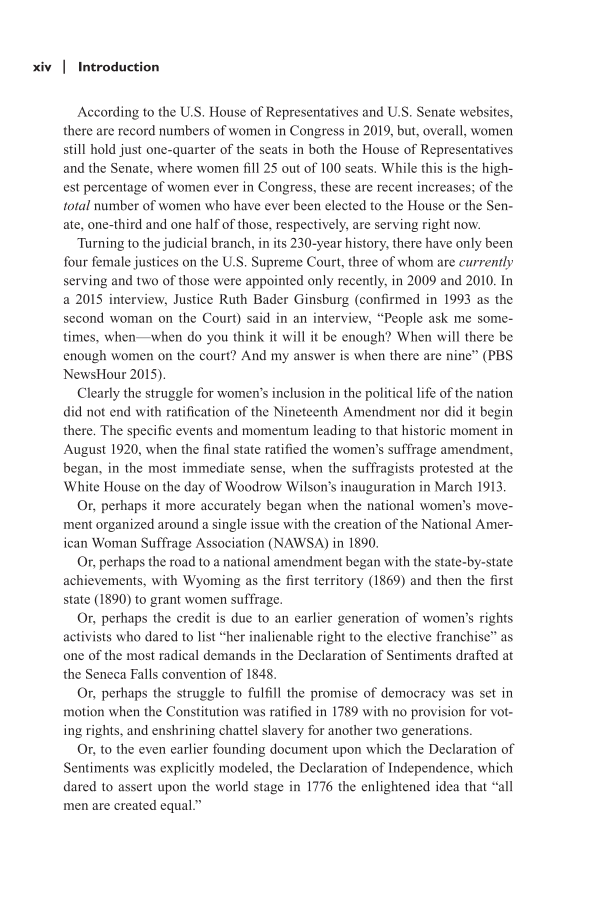xiv | Introduction According to the U.S. House of Representatives and U.S. Senate websites, there are record numbers of women in Congress in 2019, but, overall, women still hold just one-quarter of the seats in both the House of Representatives and the Senate, where women fill 25 out of 100 seats. While this is the high- est percentage of women ever in Congress, these are recent increases of the total number of women who have ever been elected to the House or the Sen- ate, one-third and one half of those, respectively, are serving right now. Turning to the judicial branch, in its 230-year history, there have only been four female justices on the U.S. Supreme Court, three of whom are currently serving and two of those were appointed only recently, in 2009 and 2010. In a 2015 interview, Justice Ruth Bader Ginsburg (confirmed in 1993 as the second woman on the Court) said in an interview, “People ask me some- times, when—when do you think it will it be enough? When will there be enough women on the court? And my answer is when there are nine” (PBS NewsHour 2015). Clearly the struggle for women’s inclusion in the political life of the nation did not end with ratification of the Nineteenth Amendment nor did it begin there. The specific events and momentum leading to that historic moment in August 1920, when the final state ratified the women’s suffrage amendment, began, in the most immediate sense, when the suffragists protested at the White House on the day of Woodrow Wilson’s inauguration in March 1913. Or, perhaps it more accurately began when the national women’s move- ment organized around a single issue with the creation of the National Amer- ican Woman Suffrage Association (NAWSA) in 1890. Or, perhaps the road to a national amendment began with the state-by-state achievements, with Wyoming as the first territory (1869) and then the first state (1890) to grant women suffrage. Or, perhaps the credit is due to an earlier generation of women’s rights activists who dared to list “her inalienable right to the elective franchise” as one of the most radical demands in the Declaration of Sentiments drafted at the Seneca Falls convention of 1848. Or, perhaps the struggle to fulfill the promise of democracy was set in motion when the Constitution was ratified in 1789 with no provision for vot- ing rights, and enshrining chattel slavery for another two generations. Or, to the even earlier founding document upon which the Declaration of Sentiments was explicitly modeled, the Declaration of Independence, which dared to assert upon the world stage in 1776 the enlightened idea that “all men are created equal.”
Document Details My Account Print multiple pages
Print
You have printed 0 times in the last 24 hours.
Your print count will reset on at .
You may print 0 more time(s) before then.
You may print a maximum of 0 pages at a time.








































































































































































































































































































































































































